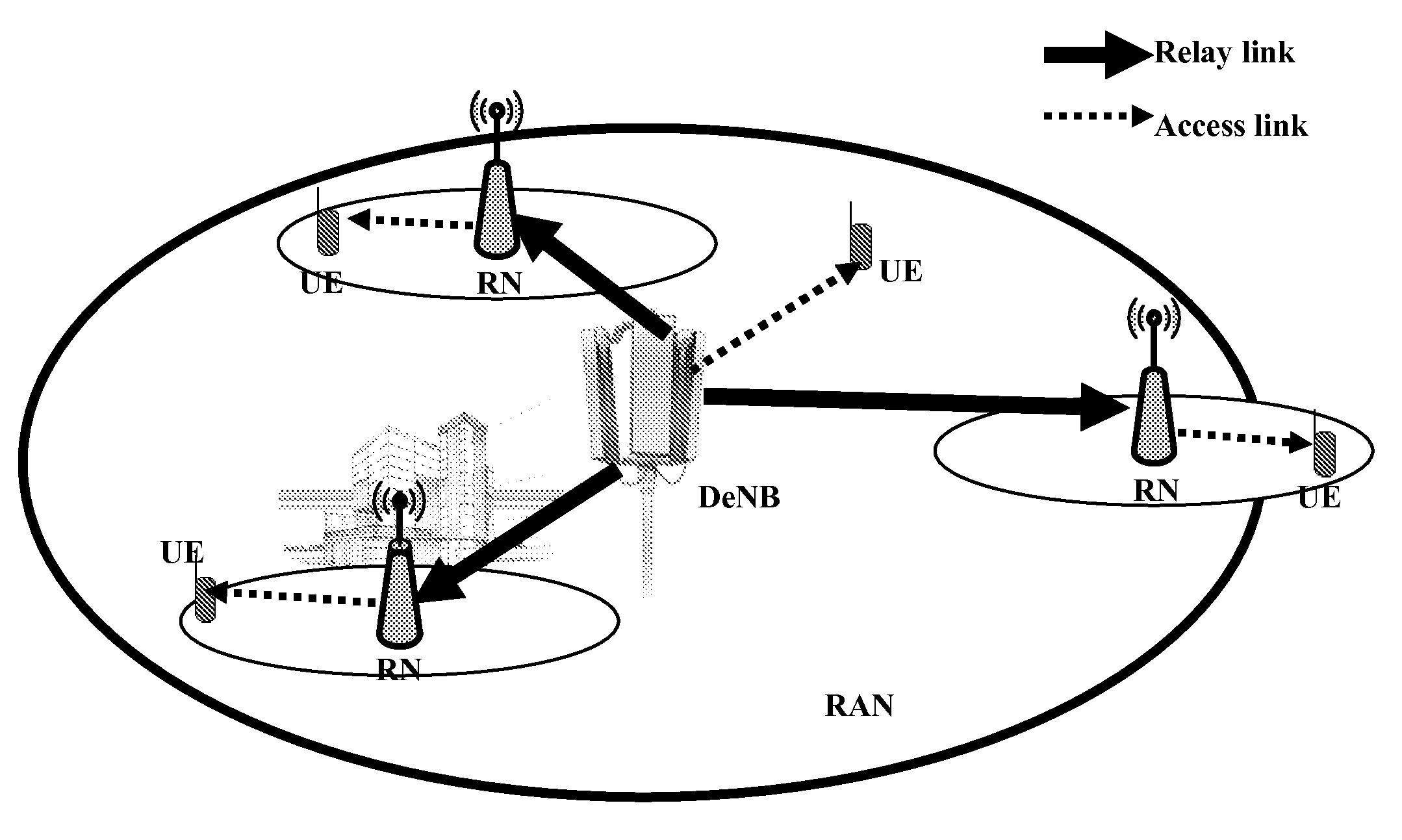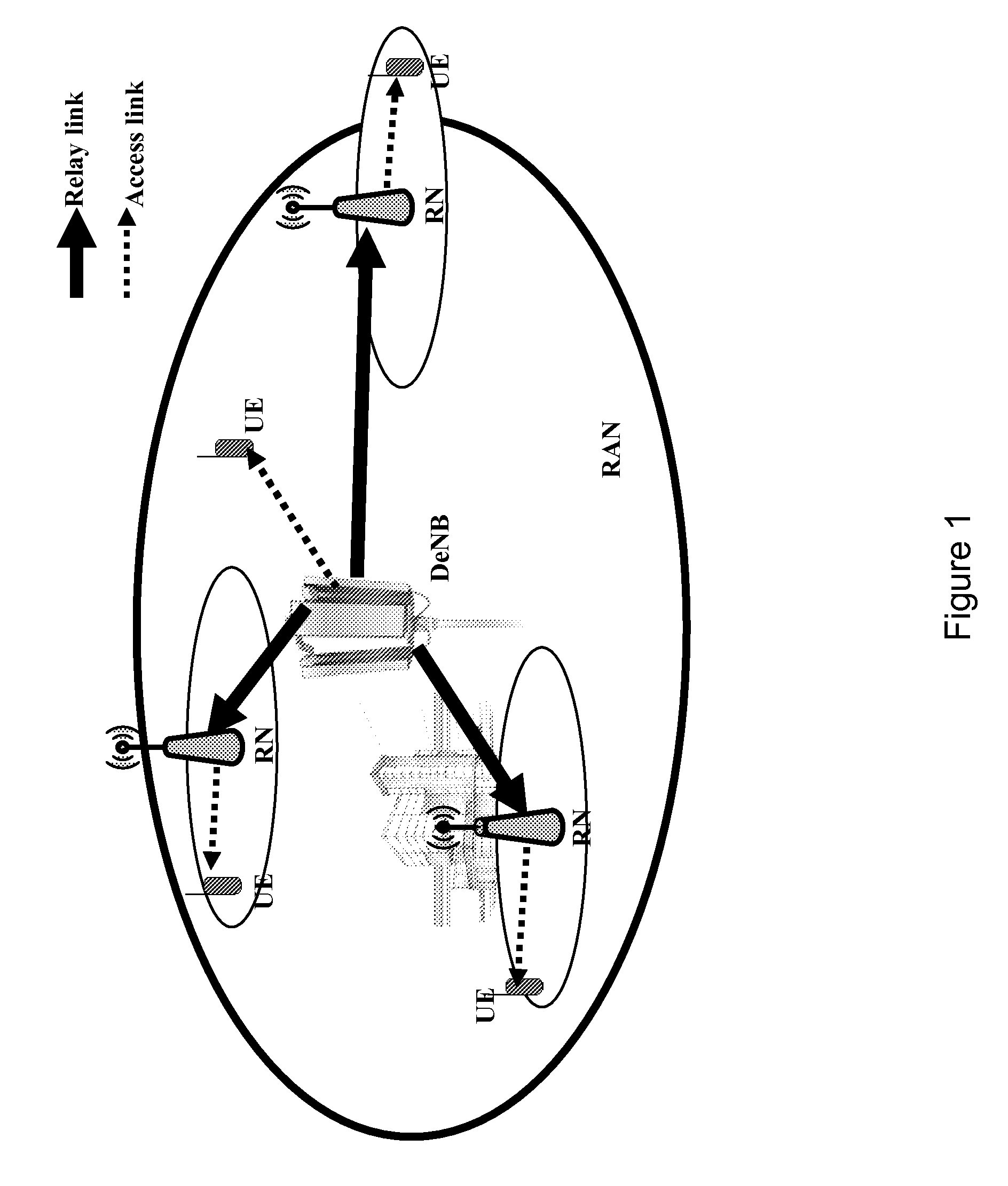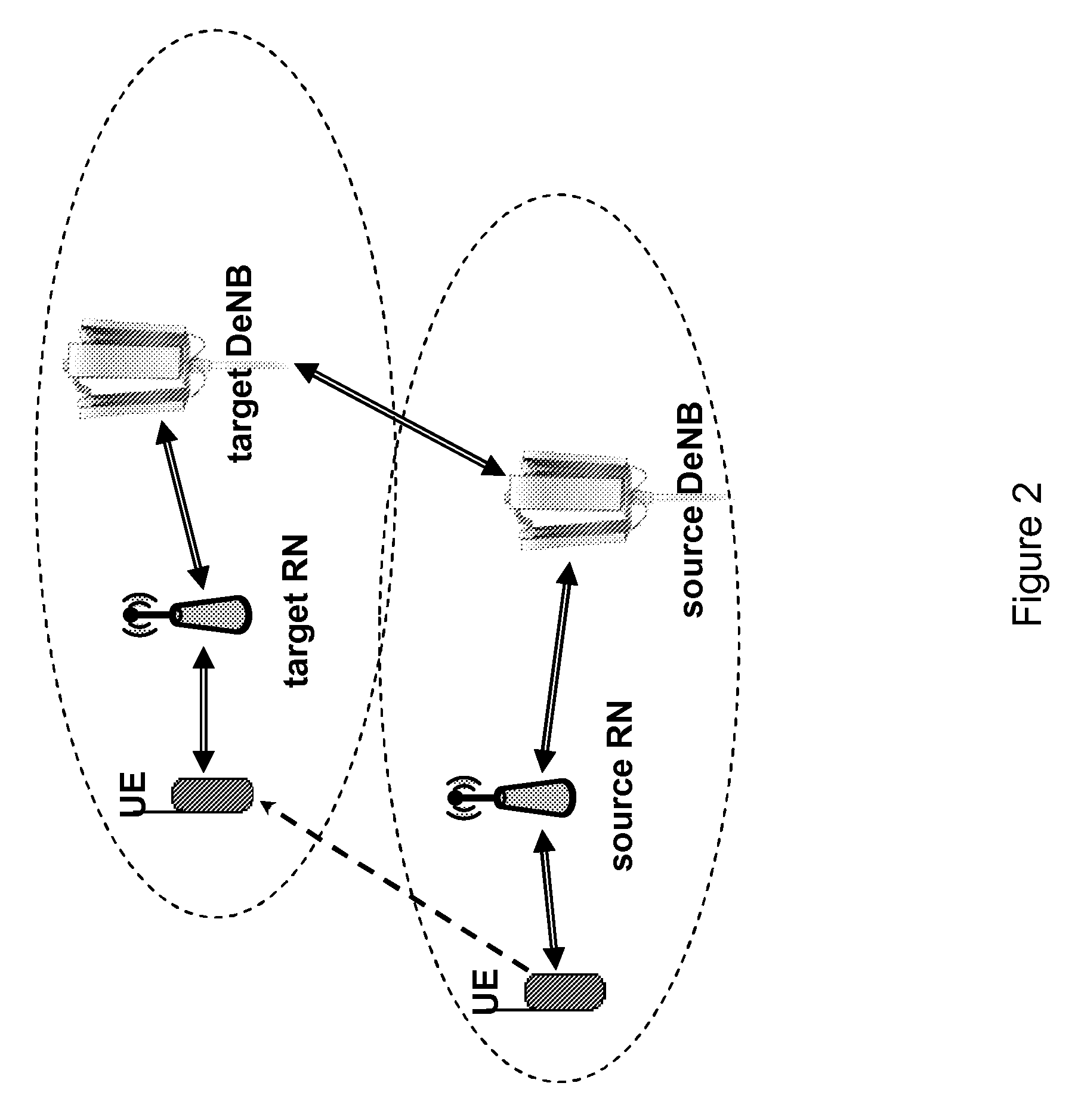Handover control for networks with several types of backhaul connections
a network and backhaul technology, applied in data switching networks, frequency-division multiplexes, instruments, etc., can solve the problems of increasing delay, inability to switch off the link between the rn and its ues, and even more delay. , to achieve the effect of efficient handover control and efficient handover control
- Summary
- Abstract
- Description
- Claims
- Application Information
AI Technical Summary
Benefits of technology
Problems solved by technology
Method used
Image
Examples
Embodiment Construction
[0030]The present invention and its embodiments aim at solving or at least mitigating the above problems.
[0031]The present invention and its embodiments are made to provide for feasible mechanisms for facilitating efficient handover control for networks with several types of backhaul connections.
[0032]According to an exemplary first aspect of the present invention, there is provided a method comprising receiving delay information being indicative of an expected packet delay in a cell of an access node in an access network, and evaluating the suitability of the access node cell as target for a handover of a terminal based on the expected packet delay of the access node cell.
[0033]According to further developments or modifications thereof, one or more of the following applies:[0034]the method according further comprises obtaining delay requirement information being indicative of a tolerable packet delay for the terminal, wherein the evaluating is based on the expected packet delay of ...
PUM
 Login to View More
Login to View More Abstract
Description
Claims
Application Information
 Login to View More
Login to View More - R&D
- Intellectual Property
- Life Sciences
- Materials
- Tech Scout
- Unparalleled Data Quality
- Higher Quality Content
- 60% Fewer Hallucinations
Browse by: Latest US Patents, China's latest patents, Technical Efficacy Thesaurus, Application Domain, Technology Topic, Popular Technical Reports.
© 2025 PatSnap. All rights reserved.Legal|Privacy policy|Modern Slavery Act Transparency Statement|Sitemap|About US| Contact US: help@patsnap.com



